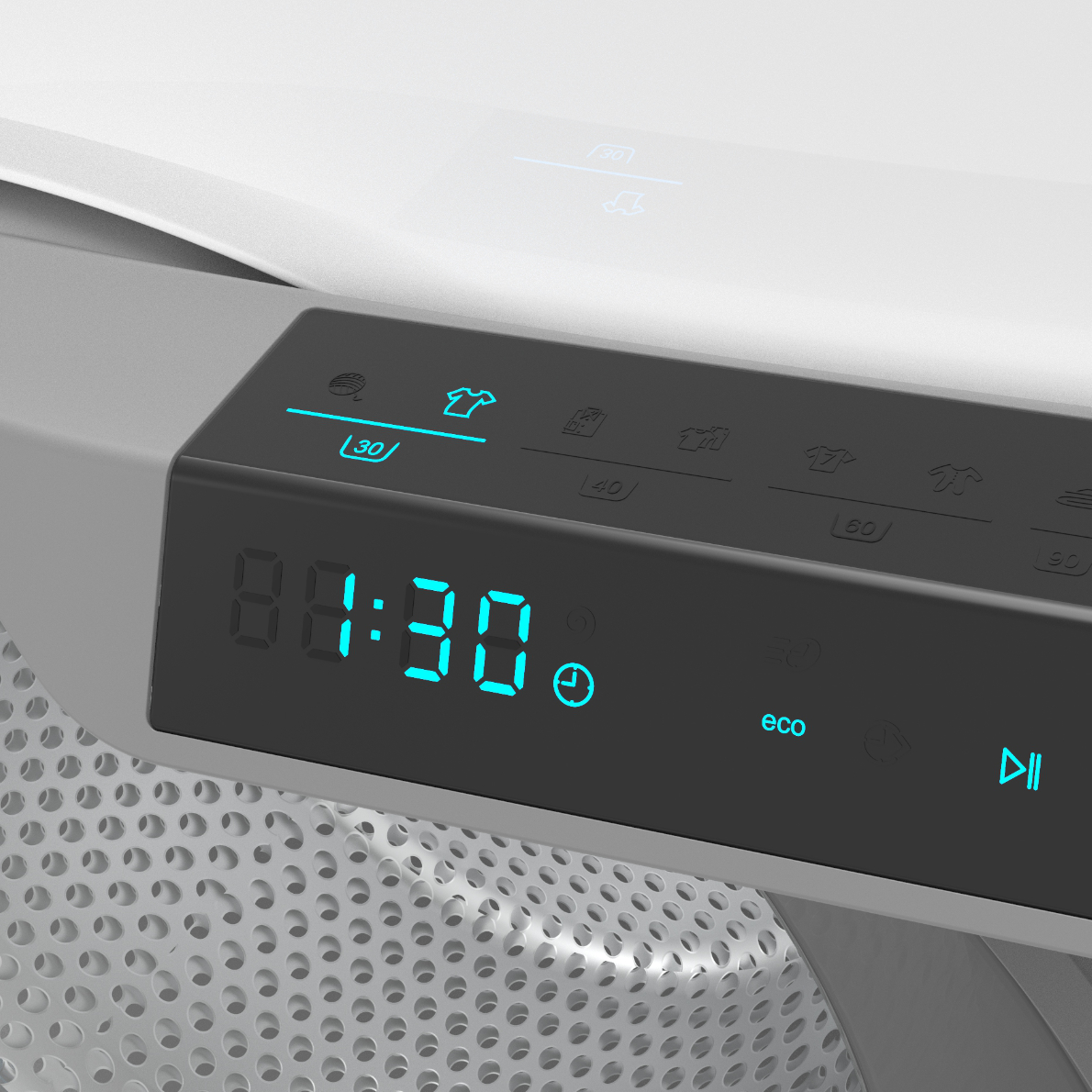CoMoDo
The washing machine touch display of the future: Researchers develop shape-adapted controls
In the research project "CoMoDo" (Communication Module Inside Door), the technologies and processes needed for modern operating and display systems were researched and developed using washing machines as an example. The focus was on touch control with integrated displays, whereby the individual technologies were interconnected within a modular system. A special focus is the development of substrate, integration and conforming technologies for inmold electronics, which enable much more compact interaction concepts than before.
Today, washing machines should be able to do more than spin and clean laundry at the touch of a button. The users want integrated timers to control the wash cycle as desired. But does that now require more technology in the everyday machine? The researchers at Fraunhofer IZM say yes. With a touch surface with no cracks and crevices, they want to offer users more comfort, a safer and more individual application, and easier cleaning of the display surfaces.
Two long-lasting trends in current technical devices such as smartphones and tablets have become indispensable: Touch instead of mechanical buttons and larger displays for display. In washing machines, touch buttons and the display are often separated, or expensive materials such as TFTs are used for high-end devices. For this reason, Fraunhofer IZM, as a pioneer of the conformable electronics required for the touch function, and PAS Deutschland GmbH have teamed up with international customers from the industry such as Bosch, Siemens and Miele to propose even more individual design elements with the development of further modular components for operating systems. Under the motto "Touch what you see", PAS has developed an operating system that uses LEDs and yet enables app-like operation. This project aimed to integrate these operating systems in even smaller installation spaces and at the same time to meet the high requirements in terms of lighting, design and function when operating the display. In the washing machine with these touch controls, the key is the loading hatch near the handle. The attached control element design is very slim and, from an electronic point of view, relatively compact, since the handle of the loading hatch is not particularly large, but is ergonomically shaped. This required the development of cost-effective materials for the manufacture of transparent touch sensors and the integration of new displays, e.g. passive components such as resistors, capacitors and integrated circuits as well as LEDs.
The washing machine display is operated through the electrically conductive polymer material PEDOT, the transparency of which makes the display elements ideally visible. The PEDOT is printed and establishes the electrical connection to the microcontroller, which controls the washing machine. The special feature of the module is the printed circuit board, which enables the finest of printed circuits, allowing the control element to be much more compact and insertable at the ergonomic points such as the handle. On the display, the digits and symbols must be sufficiently bright, sharp and homogeneously illuminated. At the same time, flexible and modular touch foils are required, since previous material systems are not conformable. With PEDOT as a "transparent" functional layer, the printed structures could be seen. Other technologies, in turn, are significantly more expensive. Together, Fraunhofer IZM and PAS were able to find a way to produce sensor films printed with PEDOT that were virtually homogeneous and transparent. This means that transparent sensor films for touch applications can also be produced efficiently in smaller quantities in the future.
The integration technology to be developed by Inmold Electronics in combination with Conformable Electronics is the focus of the subproject of Fraunhofer IZM and PAS. The topic only came up in recent years and, with regard to materials and processes, is still in the development stage. The technology will make it possible to make mechanical structures and surfaces "smart" by having sensors, electronics and actuators and by interacting with their environment and users. The fields of application are thus very broad. Control elements of devices, lighting, vehicle cabins, and also medical devices benefit from the new embedded functions. Weights and volumes are reduced, mechanical controls are avoided, and design freedom is increased.
The technologies envisaged in this project have been jointly researched to allow them to be modularly combined with each other as well as with existing technologies. A modular structure allows tailored responses to customer requirements and can at the same time take into account the shorter development times. The transfer of the expected results to other industries includes in particular start-ups and SMEs in the IoT sector and gives such companies in Berlin a competitive advantage through access to novel technologies for IoT. The CoMoDo project was co-financed by the European Regional Development Fund (ERDF) and successfully completed at the end of 2020. For PAS, this development is a USP as a system supplier for their international customers, and the Fraunhofer IZM proves once again why they are known and renowned for the field of conformable electronics.
Download
Last modified:
 Fraunhofer Institute for Reliability and Microintegration IZM
Fraunhofer Institute for Reliability and Microintegration IZM
